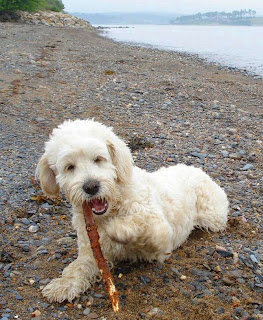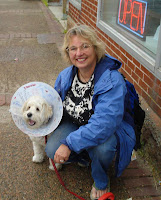In an article entitled “Human Morality: Innate or Learned” Rebekah Richards writes, “Morality, integrity, generosity, honor – these are concepts our society esteems, rewards, and expects. They are principles embodied by our cultural heroes, and values which we strive to develop in our children. But where do these qualities originate? Are we taught to be good, or do we possess innate virtue? Are we condemned to a constant battle against our ‘lower nature’?”
Richards cites scientists and philosophers from the fifth century to the present day (all male, I might add; like Augustine of Hippo, Michal de Montaigne, Thomas Henry Huxley to name a few) who had in common the notion that humankind’s goodness was just a veneer over a morality that was rotten and self-serving at its core. Some suggest that no act of “unsolicited pro-sociality” (“other-regarding preferences”) can be characterized as wholly unselfish. There is always something to be gained from the act, they insist, even if it is only to “feel good”.
At the other end of the spectrum of a similar prejudice, some anthropologists argue that morality and true altruism are qualities limited to humans as a result of learned behavior and cultural ethics. The inference here is that those qualities we may share with animals other than humans are base and those we do not share with them are elevated.
It was the grace of altruism that allowed it all to happen in the first place.
Scientists have been demonstrating for years that cooperation among organisms and communities and the act of pure altruism (not reciprocal altruism or kin/group selection) is, in fact, more common in Nature than most of us realize.
Decades of experimentation suggest moral or altruistic qualities in non-human primates, and also provide support for the idea that human morality is innate. A 1964 study found that rhesus monkeys who could pull on a chain to acquire food would refuse to pull for days if doing so delivered a shock to another monkey; they were “literally starving themselves to avoid inflicting pain upon another” (de Waal 2006).
However, some researchers in recent lab studies with chimpanzees, suggested a potential absence of “other-regarding preferences” in test animals and concluded that this confirmed that such preferences are limited to humans, who alone are sophisticated enough for cultural learning, theory of mind, perspective taking and moral judgment to convince them to perform an altruistic act.
It is my opinion that these primate studies, which based their measures of “altruism” on food allocation, may have failed to demonstrate altruism due to the measure, compounded with the laboratory setting. Animals will not behave the same in their natural habitat as in a laboratory; their priorities will be different. I found it interesting that true altruism was demonstrated in life-threatening scenarios over less life-threatening ones, such as the experiments conducted in the lab by various anthropologists using food exchange. My opinion is corroborated by scientists, Keith Jensen and Felix Warneken, who concede that the distinction between food exchange and instrumental helping is a potentially crucial one.
Vervet monkeys give alarm calls to warn fellow monkeys of the presence of predators, even though by doing so they attract attention to themselves and increase their chance of being attacked. Biologists argue that the group that contains a high proportion of alarm-calling monkeys will have a survival advantage over a group containing a lower proportion, thereby encouraging this trait to continue and evolve among individuals. The Vervet monkey crier is Nature’s Hero. And Nature’s heroes are our real altruists.
de Waal explains that “evolution favors animals that assist each other if by doing so they achieve long-term benefits of greater value than the benefits derived from going it alone and competing with others” (de Waal 2006). The prevalent phenomenon of altruism is Nature’s answer to the Prisoner’s Dilemma.
“One of the most striking consequences of the study of animal behavior,” says anthropologist Robert Sapolsky, “is the rethinking that it often forces of what it is to be human.” He notes that “a number of realms, traditionally thought to define our humanity, have now been shown to be shared, at least partially, with nonhuman species” (Sapolsky 2006). This makes some of us uncomfortable. To some, it threatens to make us less special. The corollary is that this demonstrates that we possess intrinsic virtue, not something “painted” on through cultural teaching or diligent personal effort. Of course, it also means that all other beings possess intrinsic value too. In the final analysis, what we generally “know” is colored by what we believe and want to continue believing.
The growing knowledge and eventual acceptance that animals and very young children possess truly altruistic behavior will have deep implications on how we interact with and treat each other, our animal world and Nature generally. Which brings me to ecology and its importance in our daily lives.
We have so separated ourselves from our environment that we no longer know how—or, more importantly, are not inclined—to interact with it. Separation from something that we are a part of creates a disconnect that makes it hard for us to respect or care for. This is what is at the root of altruism: intimacy and a sense of familiarity and identity that fosters empathy and nurtures compassion. Ecology provides an understanding of our natural world that will help us to respect it and everything that is a part of it, ourselves included.
p.s. This link provides a good example of an altruistic act by a "predator" toward a creature obviously not its "kin". Tell me what you think: http://www.korduroy.tv/2010/face-off-with-a-leopard-seal
References:
Bradley, Brenda. 1999 "Levels of Selection, Altruism, and Primate Behavior." The Quarterly Review of Biology 74(2):171-194.
De Waal, Frans, with Robert Wright, Christine Korsgaard, Philip Kitcher, and Peter Singer. 2006 Primates and Philosophers: How Morality Evolved. Princeton: Princeton University Press.
Goodall, Jane. 1990 Through A Window: My Thirty Years with the Chimpanzees of Gombe. Boston: Houghton Mifflin.
Sapolsky, Robert M. 2006 "Social Cultures Among Nonhuman Primates." Current Anthropology 47(4):641-656.
Warneken, F. & Tomasello, M. 2006. “Altruistic Helping In Human Infants and Young Chimpanzees.” Science, 311, 1301–1303.
Warneken, F., Hare, B., Melis, A. P., Hanus, D. & Tomasello, M. 2007. “ Spontaneous Altruism By Chimpanzees and Young Children.” PloS Biology, 5(7), e184.
de Waal, F. B. M. 2008. “Putting the Altruism Back Into Altruism: The Evolution of Empathy.” Annu. Rev. Psychol., 59, 279–300.
de Waal, F. B. M., Leimgruber, K. & Greenberg, A. R. 2008. “Giving Is Self-rewarding for Monkeys.” Proc. Natl. Acad. Sci., USA. 105, 13685–13689.
Nina Munteanu is an
ecologist and internationally published author of novels, short stories and
essays. She coaches writers and teaches writing at George Brown College and the
University of Toronto. For more about Nina’s coaching & workshops visit www.ninamunteanu.me. Visit www.ninamunteanu.ca for more about her writing.
















